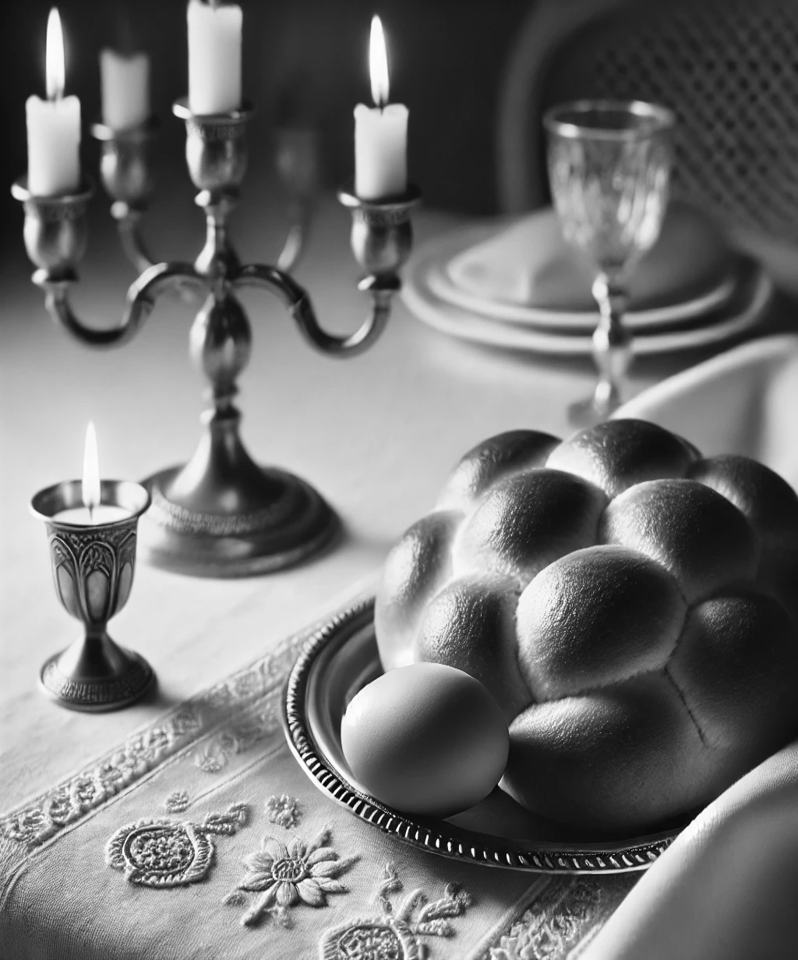This year – 5785/2024 – the Yomim Tovim of Rosh Hashanah and the first and last days of Succot (in the Diaspora) fall on Thursday and Friday. We therefore have the opportunity of fulfilling the Rabbinical mitzvah of Eruv Tavshilin a total of three times. Let us try and understand this unique mitzvah.
As most people know, the main difference between Shabbat and Yomtov is that cooking, baking, etc. are forbidden on Shabbat but are permitted on Yomtov. However, cooking on Yomtov for after Yomtov use is prohibited, and this holds true even if the day after Yomtov is Shabbat (see further). That is, it is forbidden to cook or bake any food on the Yomtov, even for the Shabbat that immediately follows it.
For this reason, our Rabbis, of blessed memory, instituted the Eruv Tavshilin through which cooking can be done on Yomtov for the Shabbos.
Through the need to set an Eruvi Tavshilin before Yomtov, people will be made aware how if cooking without such an Eruv is prohibited even if that cooking is for the holy Shabbat, then how much more so is cooking on the Yomtov for the weekday prohibited. Through the Eruv Tavshilin, therefore, the honour of the Yomtov is made known and underscored[1].
But how does setting an Eruv allow cooking on Yomtov for Shabbat? How is this achieved with the Eruv? To set an Eruv Tavshilin on Erev Yomtov, one puts aside a dish of cooked food together with a baked bread or matzah to serve as the start of the cooking and baking of the Shabbat food. Any further food preparation during the Yomtov for Shabbat is then merely the continuation of the cooking and preparing for Shabbat which was started on the weekday just before the Yomtov. The Rema (527:1) explains that the Eruv (the word means mixture or pooling together) signifies that the cooking being prepared on Yomtov for Shabbat is now combined with that which was already prepared for the Shabbat before Yomtov and it was not initiated on the Yomtov.
There is a dispute as to why cooking on Yomtov for the Shabbat without an Eruv Tavshillin is at all forbidden. Rav Chisda[2] is of the opinion that this is an Issur mi’d’Rabanan (Rabbinically prohibited) because Min Hatorah (Biblically) the needs of Shabbat are permitted to be done on Yomtov. This is because the Shabbat which follows immediately after a Yomtov is considered as a continuation of the holiness of the Yomtov. It is all one Kedusha (the same type of holiness) with the Yomtov, as if it were all one long day.
Rabbah, on the other hand, holds that cooking on the Yomtov for Shabbat is forbidden min HaTorah, only that we apply the principle of ‘Ho’il’ (the word means literally ‘since …”), that is, since it is possible that guests may arrive on Yomtov and partake of the cooked food, in which case it would be perfectly permitted to have cooked some more, it is therefore permitted min HaTorah to cook even quite a large quantity of food on Yomtov for Shabbat, in case guests may show up during the Yomtov afternoon and consume the food that had just been cooked, but there must at least be the possibility of using that food on the Yomtov itself. According to Rav Chisda, however, we do not need to apply the principle of ‘Ho’il’, because cooking on Yomtov for a Shabbat following the Yomtov is permitted in any event, as just explained.
However, both Rav Chisda and Rabbah agree that cooking on Yomtov for the Shabbat without setting an Eruv would be forbidden as an Issur mi’d’Rabanan, and that the Rabbis permitted such cooking only if an Eruv was set before Yomtov. Whichever opinion we follow, everybody agrees that it is not possible for the Eruv (a device which is mi’d’Rabonon) to permit an Issur Torah.
Accordingly, if one cooks on Friday which is Yomtov, close to sunset, in which case it is not at all feasible that guests will come and partake of that food on the Yomtov, according to Rabbah, this cooking would be forbidden as a Torah prohibition and the Eruv could not allow this cooking, because the Eruv cannot possibly permit an Issur Torah.
Similarly, making a flame smaller under a pot of food which is for Shabbat (for instance, the Cholent) on the Yomtov, just before Shabbat commences because it might otherwise burn on the Shabbat, would be forbidden on the Yomtov, even with an Eruv Tavshilin, due to it being a Melacha (an act) being done exclusively for the Shabbat. [In such a case, it would be permitted for a non-Jew to turn the flame lower[3].]
Various Rishonim[4] rule like Rabbah. However, the Rambam seems to follow the opinion of Rav Chisda, that even without the principle of ‘Ho’il’ it would be permitted min HaTorah to cook on Yomtov for Shabbat. In cases of need therefore, the Biur Halochoh (beginning of siman 527) allows one to cook on Yomtov for Shabbos even close to sunset (even in a case where the principle of ‘Ho’il’ is not feasible).
The Aruch HaShulchan (527:3) also proves conclusively that the Halachah follows the opinion of Rav Chisda and that one does not need to fall back onto the principle of ‘Ho’il’. He points out that no one seems to be particular about this requirement of not cooking the food close to sunset.
Furthermore, it may be argued that kindling the Shabbat lights (on the Friday evening which is towards the end of the second day of Yomtov) according to many Rishonim is permitted only with an Eruv Tavshilin[5]. Here too, no benefit is derived from this kindling during the daytime until the night of Shabbos, yet we allow this because of the Eruv Tavshillin[6]. This all comes to show that in principle we rely on the more lenient opinion and that there is no need to invoke the principle of ‘Ho’il’.
In addition to this, if one only begun the cooking process, the Pri Megadim[7] suggests that one can perhaps be more lenient, because to only start cooking may in fact only be an Issur mi’d’Rabonon seeing that the cooking is not completed but is only partially done (not even ‘k’ma’achal Ben Drusa’i’ – a third or half cooked) and the setting of an Eruv would allow for this, seeing that no Issur Torah is involved. However, the Pri Megadim himself rejects this because the consensus is that Chatzi Shiur (in our case a partial cooking on the Yomtov) is also forbidden Min HaTorah, which would therefore render this an act which is forbidden Min HaTorah.
Nevertheless, as mentioned, based on the reasons above, if necessary, one would be permitted to cook food for the Shabbos even close to the end of the Yomtov. This leniency applies all the more so in the case of a Friday being the second day Yomtov as is the case this year[8] where in any event no Issur Torah exists, due to it being the second day of Yomtov, not the first day.
Note should be taken that it is forbidden, even in cases of urgency, to cook for the Shabbat on the Thursday (the first day of Yomtov), since the Rabbis permitted the cooking for Shabbat (based on the Eruv Tavshilin) only on the Friday that is prior to the Shabbos[9].
Footnotes
[1] This is the opinion of Rav Ashi mentioned in Beiza, 15 b. Rabbah (ibid) has a different reasoning, in that the institution of the Eruv Tavshilin ensures that the Shabbos will be treated respectfully by preparing adequately for the Shabbos too, and not just falling back onto the leftovers of the Yomtov. The difference between the two opinions would be whether one would be required to cook the dish designated for the Eruv Tavshilin on Erev Yomtov or does it even suffice to have it cooked many days in advance before the Yomtov. According to Rabbah in that case there would be no reminder for the Shabbos after, yet one has initiated the cooking for Shabbos before the Yomtov, which according to Rav Ashi would suffice. This can be very practical in our case of using the same Eruv Tavshilin from the Erev Succot to take effect over the last days, too. The Halachic authorities tend to rule stringently in this regard, see Shulchan Aruch 527:14 and Biur Halachah thereon. Accordingly, if possible, one should try to ensure that the cooked dish which forms part of the Eruv, should be cooked on Erev Yomtov, not before.
[2] Beitza 21a, Pesachim 46b.
[3]See Nit’ei Gavriel, Chapter 87, paragraph 7.
[4] Ramban and the Ran in Beitza Chapter 2; Tosafot in Eruvin 38a DH Mishum.
[5] Shulchan Aruch 527:19, see Mishna B’rura SK 55.
[6]. See Shemirat Shabbat Kehilchata Ch.44, note 36.
[7] In his Introduction to the Hilchot Shabbos, at the beginning of the Shulchan Aruch.
[8] See Shemirat Shabbat Kehilchata (Chapter 2 note 32) that is in doubt whether this leniency also applies for second day Rosh Hashana.
[9] Shulchan Aruch 527:13.


